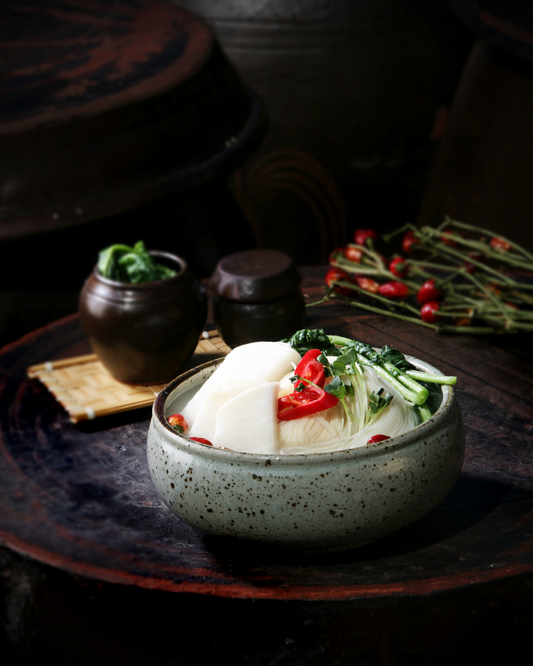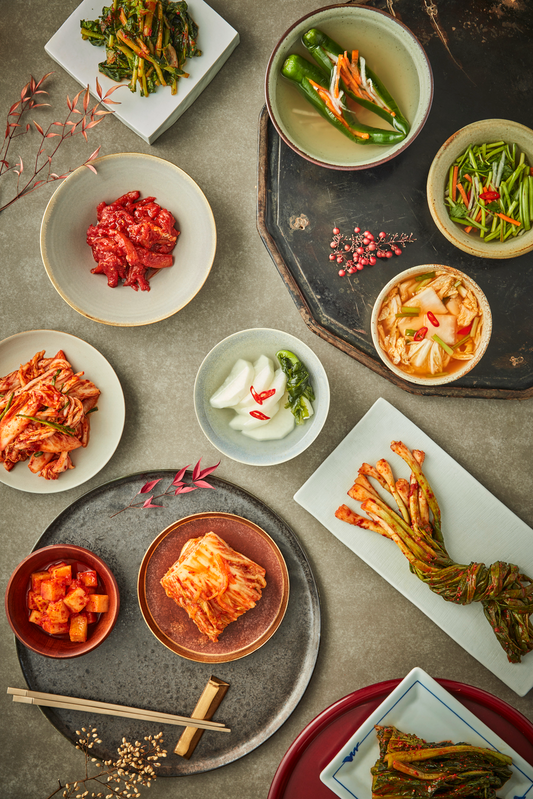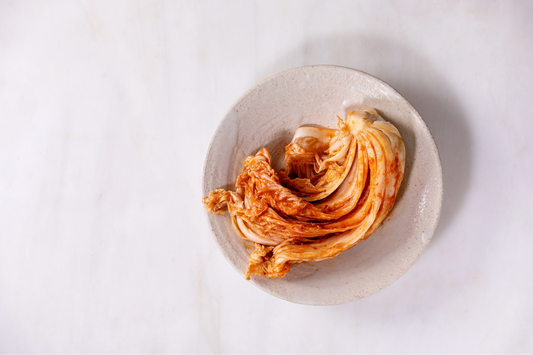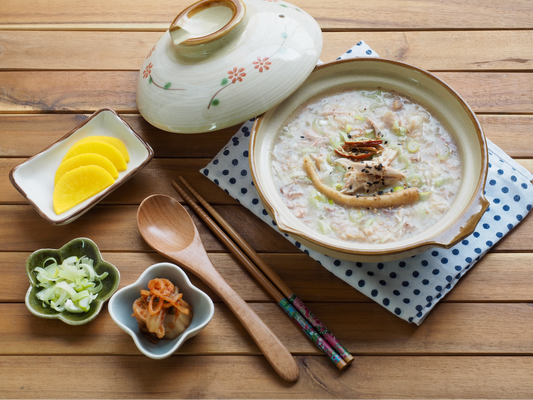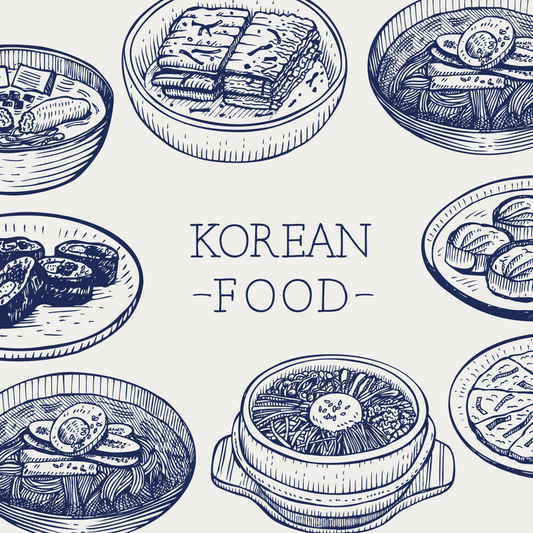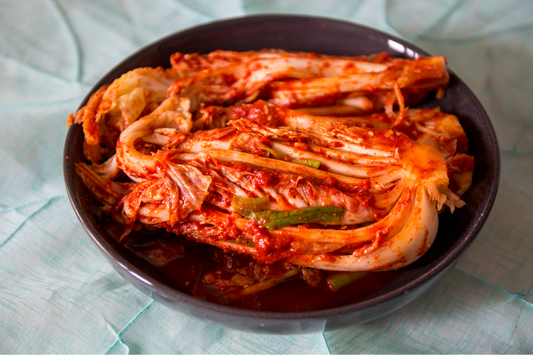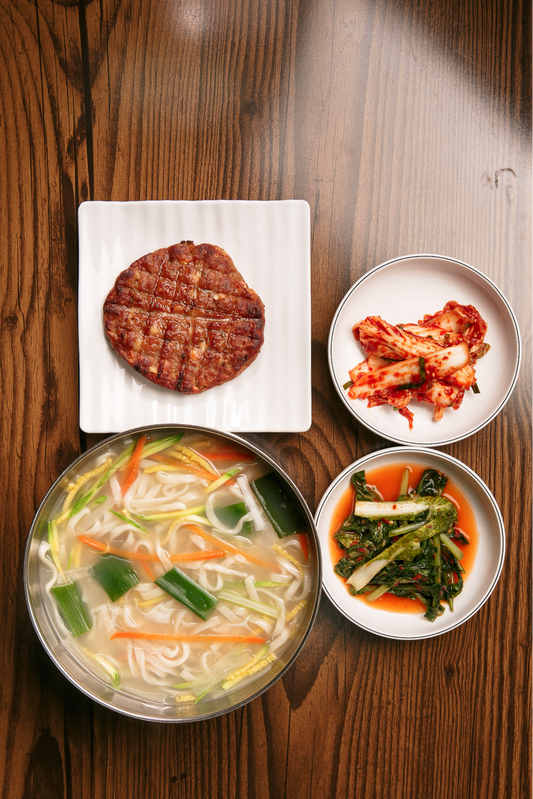Did you know a simple fermented vegetable dish showcases an entire culinary culture? Think of traditional Korean fermented foods. Kimchi comes to mind first, right? It's as essential to Korea as wine is to France. Our introduction to kimchi takes you on an exciting journey. We'll explore various types of kimchi, each with unique flavors and histories. From Baechu Kimchi's fiery taste to Oi Sobagi's crisp bite, kimchi variations reflect Korea's regional diversity. Kimchi isn't just food; it's a tradition, an art honed for thousands of years. The features of kimchi include both its delicious taste and its health benefits that have gained worldwide attention.
In Korea, Baechu Kimchi is king, making up over 70% of the market. Yet, many other types exist. Baek Kimchi's mild flavor, Kkakdugi's unique texture, and Nabak Kimchi's vivid colors offer a wide taste spectrum. Some types celebrate the seasons, while others like Dongchimi, are versatile in meals and drinks. The name "xinqi" gives kimchi a fresh identity, highlighting its worldwide appeal.
Kimchi opens a window to Korean cuisine's soul and its cultural impact. Peeling back the layers reveals traditions like Kimjang, where communities come together, and the Zen of Buddhist-Style Baechu Kimchi preparation. These practices go back roughly 4000 years. Dive into the kimchi world, where each bite tells a story, each taste carries history, and every variation celebrates Korea's vibrant culinary legacy.
Key Takeaways
- Baechu Kimchi is pivotal in Korea's fermented food scene, serving as a culinary and cultural pillar.
- The variety in kimchi, from mild Baek Kimchi to vibrant Oi Sobagi, showcases Korea's rich flavor spectrum fitting for all seasons.
- Kkakdugi and Dongchimi highlight kimchi's adaptability, enriching meals and aiding digestion.
- Kimchi's unique Chinese character signifies its global recognition and uniqueness.
- Kimjang represents more than cooking; it's a vital cultural event that fosters community and preserves heritage, acknowledged by UNESCO.
- With thousands of years of history, kimchi is renowned not just for its taste but also for its health benefits, making it Korea's top traditional fermented food.
Baechu Kimchi (Napa Cabbage Kimchi)
Baechu Kimchi is famous for its lively taste and health perks. It's a key dish in Korean cooking. The main baechu kimchi recipe uses napa cabbage with various kimchi ingredients for flavor. This mix creates a tasty side dish that goes well with many meals.
Ingredients and Basic Recipe for Baechu Kimchi
The journey to make this kimchi starts with picking top-notch napa cabbage. It's salted and washed to cut down moisture. Then, kimchi paste is made from garlic, ginger, sugar, and fish sauce. These ingredients give kimchi its unique taste. If you want a different flavor, try more fish sauce or some soy sauce for a change. Making kimchi is a blend of following tradition and adding your own twist.
Various Variations of Baechu Kimchi
Beyond the famous spicy kind, baechu kimchi variations offer a milder Baek (white) kimchi. This version doesn't have gochugaru (Korean chili powder). Instead, it uses ingredients like pears and radishes for a softer taste. Baechu Kimchi's many recipes show its ability to adapt and please different tastes. Each type has its own special flavors and textures.
Trying the bold traditional spicy kimchi or the gentle Baek kimchi lets you dive into Korea's culinary history. Both offer a journey through the complex flavors of Baechu Kimchi.

Moo Kimchi (Radish Kimchi)
Moo Kimchi is a standout in the Korean kimchi family. It uses Korean radish for its crisp texture. Compared to cabbage kimchi, it offers a refreshing difference. Moo kimchi ingredients add a unique tang and crunch.
Basic Ingredients and Characteristics of Moo Kimchi
Key ingredients for Moo Kimchi include Korean radishes and coarse sea salt. Gochugaru (Korean red pepper flakes) adds spice. Saeujeot (salted shrimp) and myulchiaekjeot (fish sauce) deepen the flavor and aid fermentation. Garlic, grated ginger, and Korean pear are added for complexity.
Representative Types and Recipes for Moo Kimchi
To make how to make kkakdugi (cubed radish kimchi), start with cubing and salting radishes. This method draws out water and ensures a crunchy texture. After adding seasonings, let it ferment at room temperature before refrigerating.
The ponytail radish (chonggak) kimchi is another interesting variety. It uses whole young radishes with their greens. This makes it visually striking and flavorful. It's a prized regional specialty kimchi.
Exploring radish kimchi reveals the diversity in traditional Korean kimchi. Each type has a unique taste from centuries of tradition. Engaging with these recipes allows a deeper understanding of kimchi's rich flavors and techniques.

Yeolmu Kimchi (Young Radish Kimchi)
In the colorful world of kimchi, Yeolmu kimchi stands out. It mixes young radish greens with tender cabbages. This makes it different from other kimchis. It's known for being crisp and refreshing. Yeolmu kimchi is perfect with summer meals, adding a nice contrast.
Ingredients and Recipe for Yeolmu Kimchi
Making Yeolmu kimchi involves traditional kimchi cooking methods and specific ingredients. You'll need 4 pounds of Yeolmu and 2 pounds of young napa cabbages for about one gallon. First, mix the greens with 6 and 3 tablespoons of Korean sea salt. Then, create a tasty paste. It uses 6 red chili peppers, 10 garlic cloves, and a piece of ginger. Add 1/4 cup each of salted shrimp and fish sauce, 3 to 4 tablespoons gochugaru, and some sugar.
Unique Characteristics of Yeolmu Kimchi
Yeolmu kimchi's unique sour taste comes from fast fermentation. It's different from other kimchi types since it's ready quickly. This makes it a favorite in Korea's hot summer. The combo of spices and young greens gives Yeolmu a tangy and crunchy feel.
Diving into different kimchi recipes shows rich differences that make Korean cuisine special. Yeolmu kimchi is simple but flavorful. It is not just food but also a peek into Korean culture.

Kkakdugi (Cubed Radish Kimchi)
Starting on the path to make kkakdugi opens a door to Korea's traditional fermented foods. Kkakdugi stands out with its crunch and bold taste. It's a celebrated kind of different types of kimchi. This traditional Korean cubed radish kimchi is both a common side dish and a symbol of kimchi variations.
Ingredients and Recipe for Kkakdugi
To make kkakdugi, you'll need Korean radish or daikon, sea salt, garlic, ginger, and more. These ingredients mix to make 8 cups of kkakdugi in a 64-oz jar. For beginners, this recipe is easier than making cabbage kimchi. You might also add onion and apple to make it taste even better.
One serving of kkakdugi gives you 52 kcal. It fits paleo, Whole30, and keto diets. For vegans, use tamari sauce instead of fish sauce.
Different Variations of Kkakdugi
Kkakdugi recipes may vary by region in Korea. Families adjust the recipe based on what's available. These changes show the kimchi variations and kimchi's role in Korean food.
Kkakdugi goes well with hearty Korean soups like ox bone or beef short rib soup. Its fresh taste balances rich meals. It ferments fast, in 24 to 48 hours, and stays good for a long time. This makes it a versatile favorite for various dishes.
If you love kimchi variations or want to try traditional fermented foods, making kkakdugi is a great choice. It offers both excellent taste and health benefits.

Other Types of Kimchi
The world of kimchi goes way beyond the famous Baechu kimchi. There are more than 200 types of kimchi, each unique in taste, texture, and how they're made. These different kinds showcase the vast, rich variety of Korean cuisine.
Regional Specialty Kimchi
For example, Oi kimchi, or cucumber kimchi, is crisp and refreshing. It's perfect for the summer and pairs well with Korean BBQ. Then there's Kkaennip kimchi, made with perilla leaves, which adds a complex flavor to meals. These regional kimchis add diverse tastes to Korea's food landscape.
Characteristics and Variations of Different Types of Kimchi
Each kimchi brings its own flavor, texture, and health perks. Chonggak kimchi, for instance, is crunchy and tells a story about bachelorhood in Korea. If you don't like spicy food, Baek kimchi is a great choice. It's flavorful but not hot.
Yeolmu kimchi, made with young radish leaves, is cooling, making it perfect for hot weather. Meanwhile, Nabak kimchi, a water kimchi, has mild flavors with a hint of sweet Asian pear. From the zesty Oi Sobagi to the unique Gat kimchi, these varieties showcase Korea's regional identities and culinary creativity.
FAQ
What are the main types of traditional Korean fermented foods?
Traditional Korean fermented foods include many types. You might know kimchi, gochujang (red chili paste), and doenjang (soybean paste). There's also ganjang (soy sauce) among others. Kimchi is the most well-known of these foods.
Can you provide a basic introduction to kimchi?
Kimchi is made from fermented vegetables with various seasonings. It's a key dish in Korean cuisine. It also plays a big part in Korean culture, with lots of different types based on the veggies and spices used.
What are some common features of kimchi?
Kimchi is known for its spicy and sour taste. It's made using brine and fermentation. The seasonings like chili pepper, garlic, ginger, and fish sauce make it unique. They also add health benefits.
Can you provide a simple baechu kimchi recipe?
A simple baechu kimchi recipe starts with salting Napa cabbage. Mix up a paste of red chili flakes, garlic, ginger, sugar, and fish sauce. Then, mix this with the cabbage. Let it ferment for a few days until it's sour.
What are some variations of baechu kimchi?
Baechu kimchi variations include baek kimchi, a less spicy type without chili flakes. It often has extra fruits and veggies. There's also a vegan version that uses soy-based sauce instead of fish sauce.
What makes moo kimchi different from other types?
Moo kimchi, or radish kimchi, is made with crunchy Korean radishes. It tastes similar to baechu kimchi but uses radish. How it's cut also makes it stand out from Napa cabbage kimchi.
What are some representative types of moo kimchi?
Some types of moo kimchi are kkakdugi, which has cubed radishes, and chonggak kimchi. Chonggak kimchi uses whole radishes that look like a ponytail. These offer different textures. They're good with Korean soups or as side dishes.
What are the key ingredients in yeolmu kimchi?
Yeolmu kimchi mostly uses young radish greens. It might also have cabbages, coarse sea salt, red chili peppers, and other ingredients. Garlic, ginger, salted shrimp, fish sauce, sugar, and red pepper flakes are common too.
What are the distinguishing characteristics of yeolmu kimchi?
Yeolmu kimchi is sour and uses young radish greens. These greens add a unique bitterness and leafy texture. It's especially popular in warm weather.
How do you make kkakdugi?
For kkakdugi, peel and cube Korean radishes. Mix them with a spicy paste made of chili flakes, garlic, ginger, fish sauce, and green onions. Let it ferment to get its special taste.
Are there different variations of kkakdugi?
Yes, there are different kkakdugi versions. Some might have extra seafood, fruits, or veggies. They also might vary in spiciness, depending on where they're from.
Can you list some other types of kimchi besides cabbage and radish?
Besides cabbage and radish kimchis, there's oi kimchi with cucumbers. You'll also find kkaennip kimchi with perilla leaves, pa kimchi with green onions, and others. Each has its own veggies and flavors.
How do characteristics and variations of kimchi differ by region?
Kimchi varies by region due to different climates, ingredients, and tastes. These influence how it's made, including the veggies, fermentation level, and spices. So, there's a wide variety of kimchi styles in Korea.

